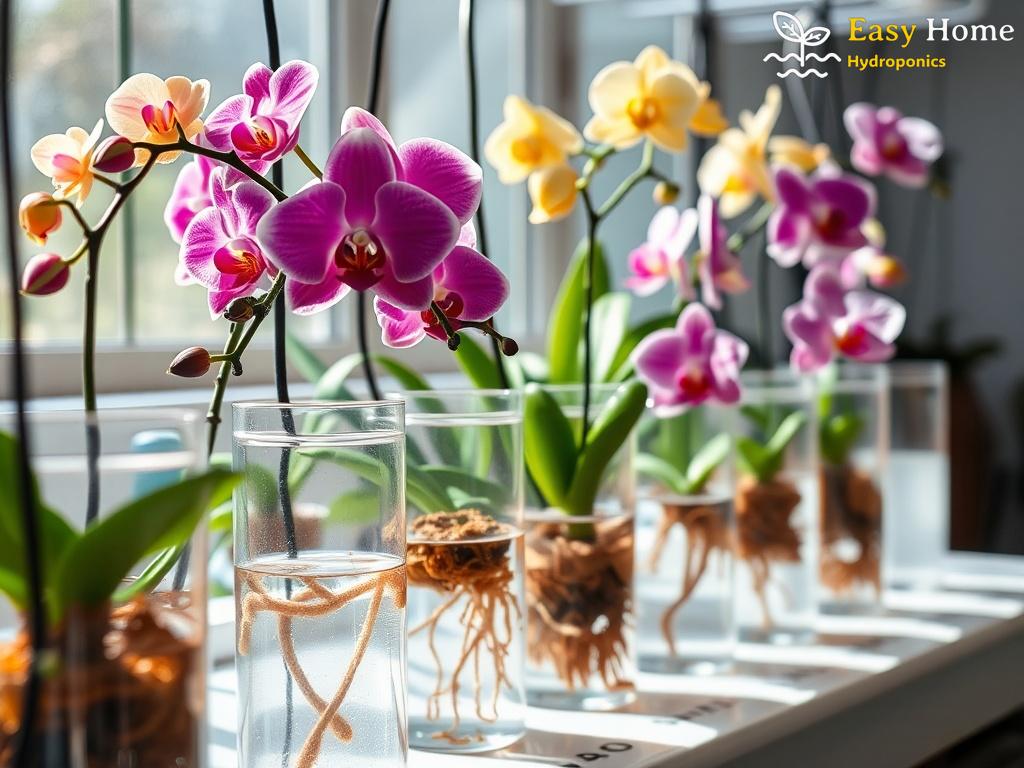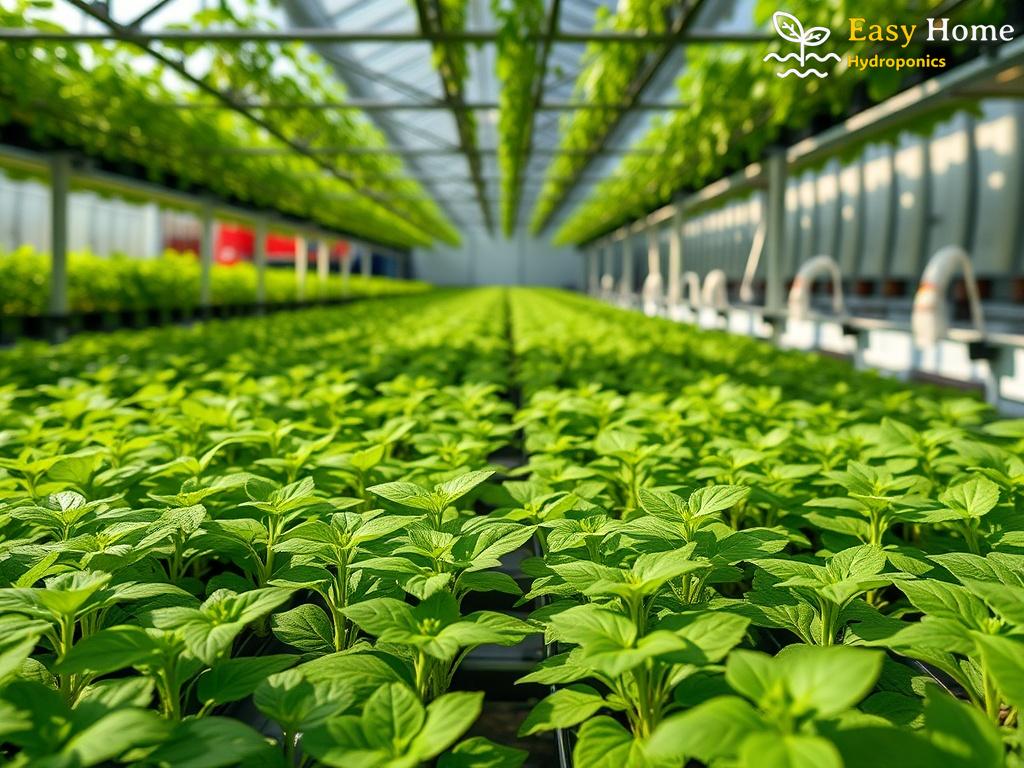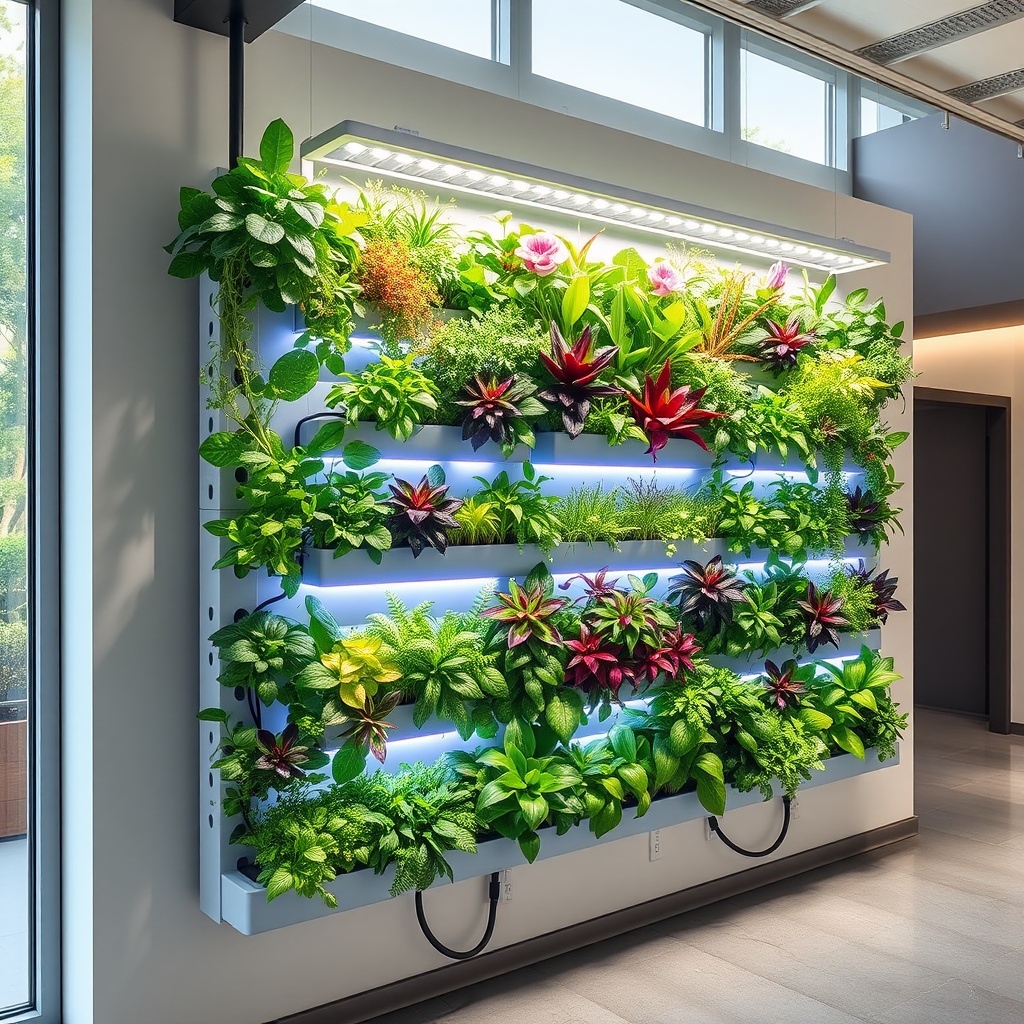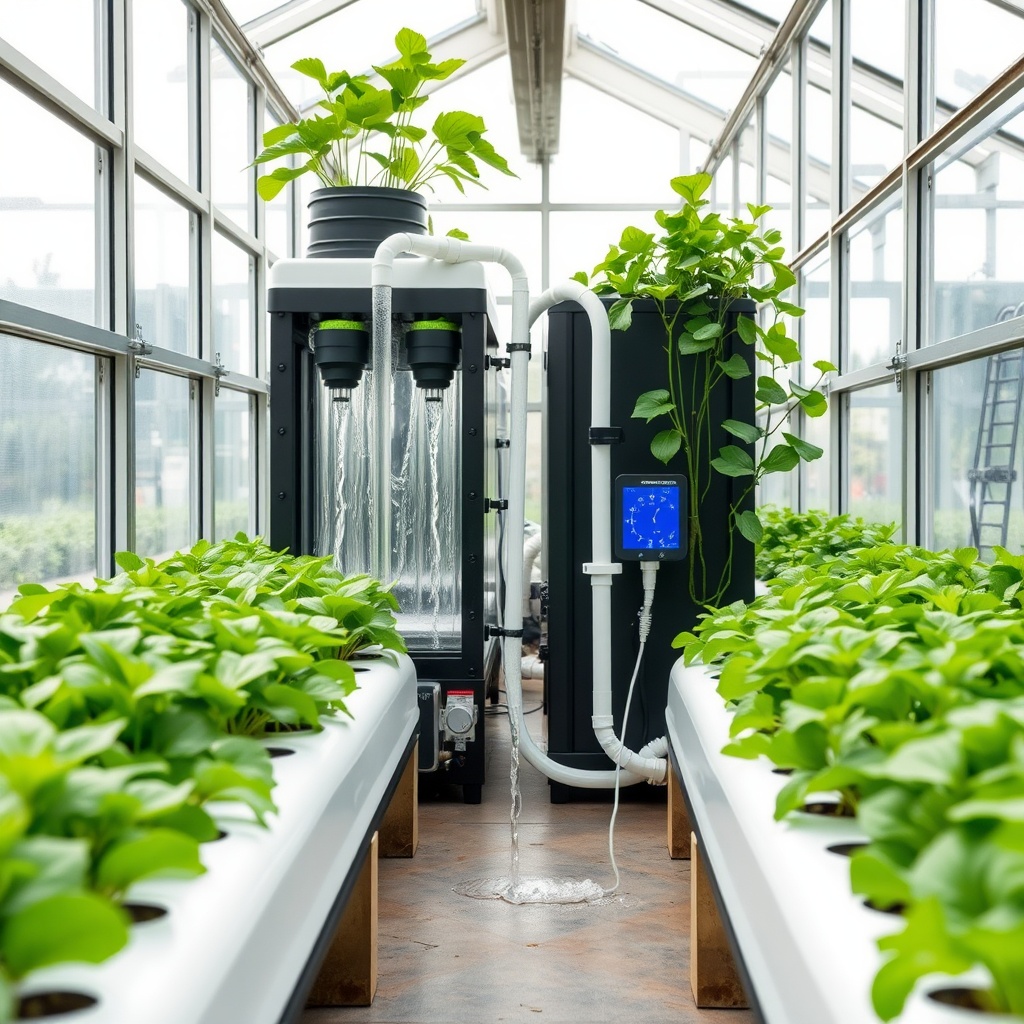The Science Behind Hydroponic Orchid Growth
In the world of horticulture, hydroponics has emerged as a revolutionary method for growing plants without soil, and orchids are no exception. This innovative approach not only enhances growth rates but also allows for more controlled environments, leading to healthier plants and vibrant blooms. Understanding the science behind hydroponic orchid growth can provide enthusiasts and growers with the knowledge needed to successfully cultivate these exquisite flowers.
One of the primary factors in hydroponic orchid growth is the nutrient solution. Unlike traditional soil methods where plants derive nutrients from the ground, hydroponically grown orchids receive all their essential nutrients dissolved in water. This tailored nutrient solution ensures that orchids receive the right balance of macronutrients and micronutrients necessary for optimal growth.
Here’s a breakdown of essential nutrients:
- Nitrogen (N): Promotes leaf growth and overall plant vigor.
- Phosphorus (P): Essential for root development and flower formation.
- Potassium (K): Increases resistance to diseases and improves flower quality.
- Calcium (Ca): Strengthens cell walls and promotes cell division.
- Magnesium (Mg): Vital for photosynthesis and chlorophyll production.
Aside from nutrient solutions, environmental factors play a crucial role in hydroponic orchid growth. Orchids thrive in specific ranges of light, temperature, and humidity, making it essential for growers to monitor and adjust these conditions closely.
Consider this table that outlines optimal conditions for orchid growth:
| Condition | Optimal Range |
|---|---|
| Light (lux) | 20,000 – 40,000 |
| Temperature (°C) | 18 – 24 (day), 12 – 18 (night) |
| Humidity (%) | 50 – 70 |
| Airflow (m/s) | 0.5 – 1.5 |
By carefully managing these environmental variables, growers can create an optimized growth environment that promotes robust health and stunning flowers, ensuring that their hydroponic orchids flourish.
Essential Nutrients for Thriving Orchids
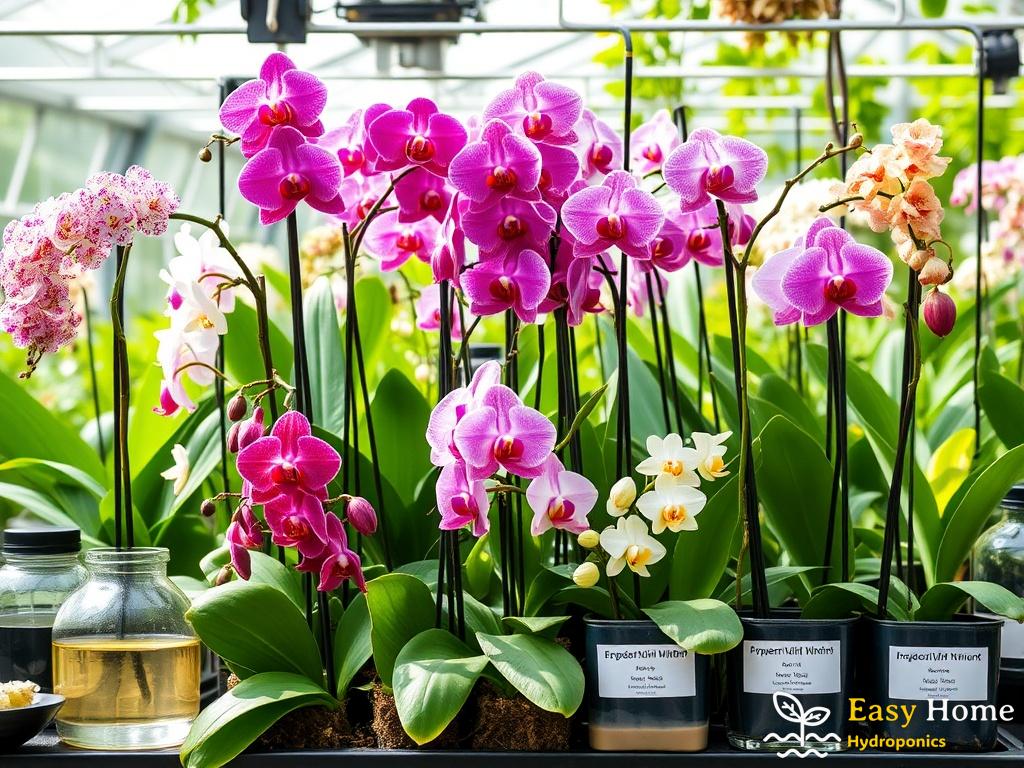
In the intricate world of hydroponic orchid propagation, the journey from flask to flower hinges on a myriad of factors, with essential nutrients standing as the cornerstone of success. These vital components ensure that orchids not only survive but thrive, producing breathtaking blooms that are the envy of any horticulturist. Understanding these nutrients and their roles can empower growers to create the perfect recipe for orchid vitality.
Just like humans require a balanced diet to function optimally, orchids need a carefully crafted nutrient solution to thrive in a hydroponic system. The unique challenge lies in providing these nutrients in a form that is readily available for absorption through their roots. Here’s a closer look at the essential nutrients every orchid craves:
- Nitrogen (N): A powerhouse for leaf development and overall plant strength, nitrogen is crucial for vigorous growth.
- Phosphorus (P): This nutrient plays a pivotal role in root establishment and encourages the formation of stunning flowers.
- Potassium (K): Known for enhancing disease resistance, potassium also increases the quality and longevity of blooms.
- Calcium (Ca): Essential for building strong cell walls, calcium supports healthy plant structure and development.
- Magnesium (Mg): As a key player in photosynthesis, magnesium is vital for the production of chlorophyll, ensuring lush green foliage.
Providing the right balance of these nutrients is not merely a matter of mixing them in a solution; it requires careful monitoring and adjustment. Over or underfeeding can lead to deficiencies or toxicities that stunt growth or damage plants. Growers should regularly test their nutrient solutions and adjust the ratios based on the growth stage of the orchids. For instance, during the vegetative stage, nitrogen levels should be higher, while during flowering, an increase in phosphorus is essential.
The journey from flask to flower is a testament to the importance of nutrient management in hydroponic systems. As growers fine-tune their nutrient solutions and environmental conditions, they set the stage for their orchids to flourish. By understanding the essential nutrients and their roles, one can not only cultivate healthy plants but also unlock the potential for stunning floral displays that captivate and inspire.
From Flask to Pot: Transitioning Seedlings
The journey of a hydroponic orchid begins in a flask, where tiny seedlings are nurtured in a sterile environment, rich with nutrients. As these delicate plants grow, the time comes for them to leave the safety of their flasks and venture into pots, a crucial transition that can determine their future success. This step is not merely a change of location; it’s a pivotal moment in the life of an orchid that requires careful planning and execution to ensure robust growth and stunning blooms.
Understanding the Transition Process is essential for any grower looking to cultivate thriving orchids. Initially, seedlings are accustomed to a highly controlled environment, which contrasts sharply with the more variable conditions of a pot. When transferring seedlings from flask to pot, it is vital to acclimate them gradually. This process, often referred to as hardening off, helps seedlings adjust to changes in light, humidity, and airflow, which can be quite drastic. By slowly introducing them to these new conditions, growers can significantly reduce transplant shock, allowing the orchids to establish themselves more effectively.
Once acclimatization is complete, choosing the right medium becomes paramount. Hydroponically grown orchids thrive in well-aerated substrates that provide the necessary drainage while retaining moisture. Popular choices include bark chips, sphagnum moss, or a specialized orchid mix designed for hydroponic systems. The key is to ensure that the medium supports the roots while allowing them to breathe, preventing the dreaded root rot that can derail any orchid enthusiast’s dreams.
Moreover, as seedlings transition, monitoring moisture levels is critical. Unlike in their flasks, where moisture is nearly constant, potted orchids require a careful balance. Overwatering can lead to root suffocation, while underwatering can stress the plants, leading to stunted growth. Growers should check moisture levels regularly, allowing the medium to dry slightly between waterings to promote healthy root development.
Furthermore, the importance of nutrient management does not diminish during this transition. While seedlings have thrived on their nutrient-rich solution in the flask, they now need to adjust to the nutrient dynamics of a pot. It’s advisable to begin with a diluted version of the nutrient solution tailored for young orchids, gradually increasing the concentration as they grow and establish themselves. This careful approach ensures that the plants receive the necessary nutrients to support their growth without risking nutrient burn.
Creating the Perfect Hydroponic Environment
Creating an ideal hydroponic environment is paramount for the successful cultivation of orchids. These delicate plants, known for their breathtaking blooms and intricate forms, require precise conditions to thrive. Beyond just nutrient solutions, the environment in which orchids grow influences their overall health and flowering potential. Understanding the vital components of this environment can significantly enhance the hydroponic experience for both novice and seasoned growers.
Light is one of the most critical factors in nurturing orchids in a hydroponic setup. Unlike many other plants, orchids have specific light requirements that can vary widely among species. Too much light can lead to scorching, while too little can stunt growth and flowering. It’s essential to provide indirect, filtered light for optimal growth. Growers often use grow lights that emit a spectrum tailored to plant needs, ensuring that the orchids receive the right intensity for photosynthesis. Adjusting the light duration can also play a role; most orchids thrive with about 12 to 14 hours of light during their growing season, mimicking natural conditions.
Temperature and humidity are two intertwined elements that can make or break an orchid’s growth cycle. Orchids generally prefer a warm environment, typically ranging between 18 to 24 degrees Celsius during the day and slightly cooler at night. This fluctuation mimics their natural habitat, encouraging blooming. However, maintaining humidity is equally crucial. Orchids flourish in environments with humidity levels between 50% and 70%, which helps prevent dehydration and promotes healthy root systems. To achieve this, growers can use humidifiers, pebble trays, or even misting techniques, ensuring that the air remains moist without waterlogging the roots.
Moreover, effective airflow is essential to prevent mold and disease, particularly in a hydroponic setup where water is present. A gentle breeze helps replicate the natural conditions orchids are accustomed to, promoting robust growth while keeping harmful pathogens at bay. Incorporating fans or vent systems can aid in achieving this balance, ensuring that air circulation is both adequate and gentle.
Common Challenges in Hydroponic Orchid Care
While the hydroponic cultivation of orchids offers a plethora of benefits, it is not without its challenges. As enthusiasts embark on the journey from flask to flower, they may encounter a variety of hurdles that can impede the growth and flourishing of these stunning plants. Understanding these common challenges is crucial for any grower aiming to achieve a thriving hydroponic orchid garden.
One of the most significant challenges in hydroponic orchid care lies in nutrient management. Unlike traditional soil gardening, where nutrients can be stored and released slowly, hydroponic systems require precise and immediate nutrient availability. As orchids have specific nutrient needs, an imbalance can lead to deficiencies or toxicities, stunting growth or even causing death. Regular monitoring of the nutrient solution’s pH and electrical conductivity (EC) is essential to ensure that orchids receive the optimal blend of nutrients.
Orchids thrive in specific humidity and temperature ranges, making environmental control a vital aspect of hydroponic care. Fluctuations in humidity can lead to stress for these delicate plants, resulting in issues such as wilting or root rot. Similarly, temperature extremes can compromise their health and blooming potential. Growers must invest in reliable monitoring equipment and create a stable environment, utilizing tools such as thermometers, hygrometers, and humidifiers to maintain ideal conditions.
To help growers navigate the complexities of hydroponic orchid cultivation, here’s a concise list of challenges to be aware of:
- Nutrient Imbalance: Regular testing and adjustment of nutrient solutions are crucial.
- Humidity Fluctuations: Maintaining consistent humidity levels is key to preventing stress.
- Temperature Variability: Ensure stable temperatures during day and night cycles.
- Pest and Disease Management: Monitor for signs of pests and diseases that thrive in humid environments.
- Overwatering or Underwatering: Striking the right balance is essential for healthy roots.
By acknowledging and addressing these common challenges, growers can enhance their hydroponic orchid care practices, paving the way for beautiful blooms and a rewarding gardening experience.

